What Are the Best Mulches for Flower Beds? 12 Great Options
-
Pete Ortiz
- Last updated:
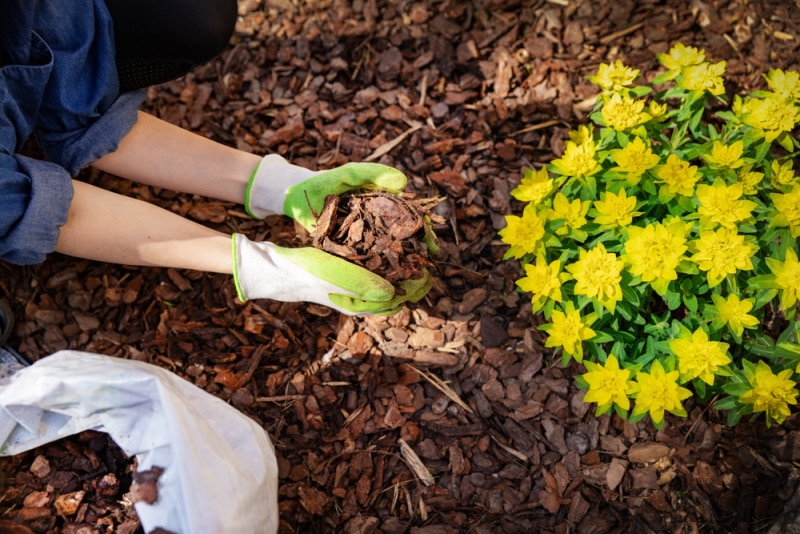
If you aren’t applying mulch to your flower beds, you aren’t giving your flower beds a real chance to thrive. Mulching offers a range of benefits that make it a worthwhile practice. Since several mulch installations are available, it presents a dilemma over the best option to use on your flower beds.
This article looks at the most valuable picks that will upgrade your garden and flower beds instantly and affordably. We also discuss how much mulch should suffice for a flower bed and the process of installing them. But first, let’s learn why mulching is essential!
Why Add Mulch?
Proper mulching is an essential maintenance practice for any flower bed. Perhaps most importantly, it is an effective cultural measure for controlling weeds. It also helps the soil retain moisture, thus providing the plants extra time to soak up water and minerals. This also protects the plant roots from scorching heat by creating a buffer between the air and soil.
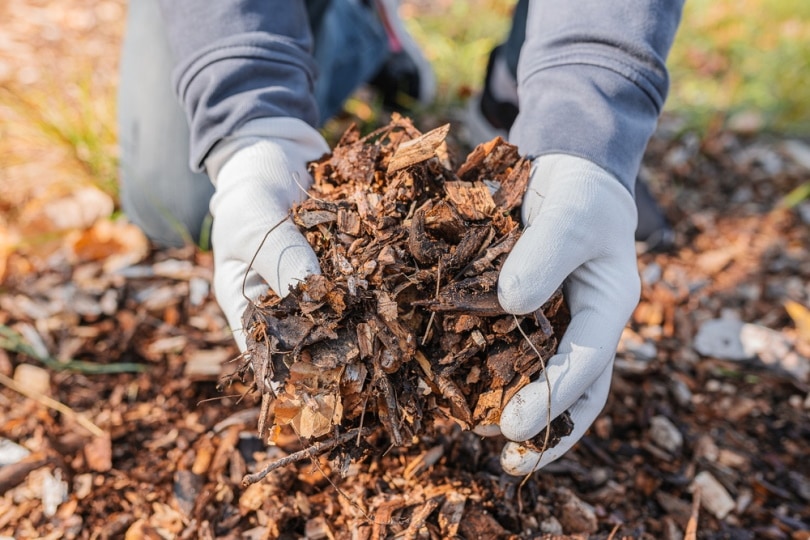
In addition, you should consider adding organic mulch to your flower bed to improve the soil’s nutrient content since it gradually decomposes. By doing so, you boost not only the soil’s nutrients, but also the ground’s aeration, drainage, and structure.
Now, let us look at the several types of mulch to adorn your flower bed.
Organic Mulches
Also known as biodegradable mulches, this mulch breaks down over time to release nutrients that enrich the soil. As such, you must apply them annually to maintain the cover and enjoy the benefits.
Organic mulch types include the following:
1. Shredded Barks of Pine or Cedar
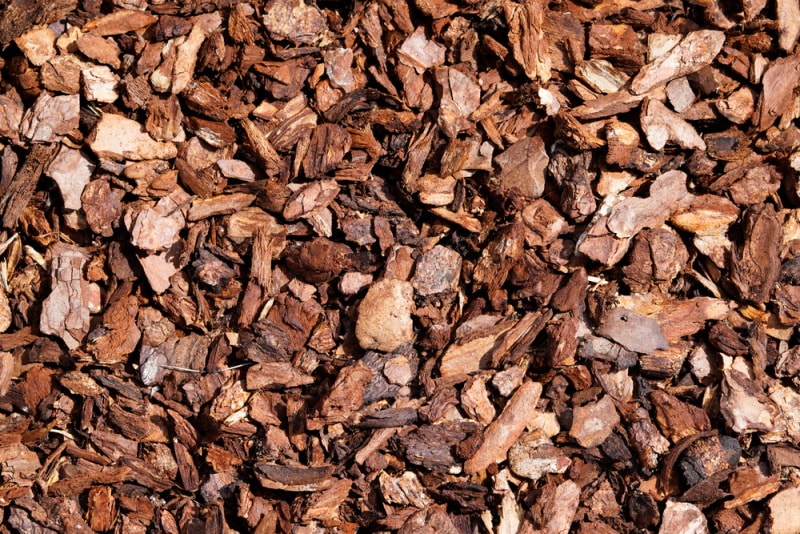
Shredded barks should come first when discussing the most common and least expensive mulch available. They are perfect for sloppy gardens and flower beds because, unlike other types of mulch such as grass and leaves, they take longer to break down finally.
A study by UF/IFAS revealed that pine barks maintain two-thirds of their initial depth 2 years after application. Since they take longer to decompose fully, you are advised to apply them in places where you don’t plan to plant anything soon, such as perennial beds and around trees or shrubs.
Check out this link for 100% natural cedar chips that are good for mulching flower beds and potted flowers.
2. Leaves
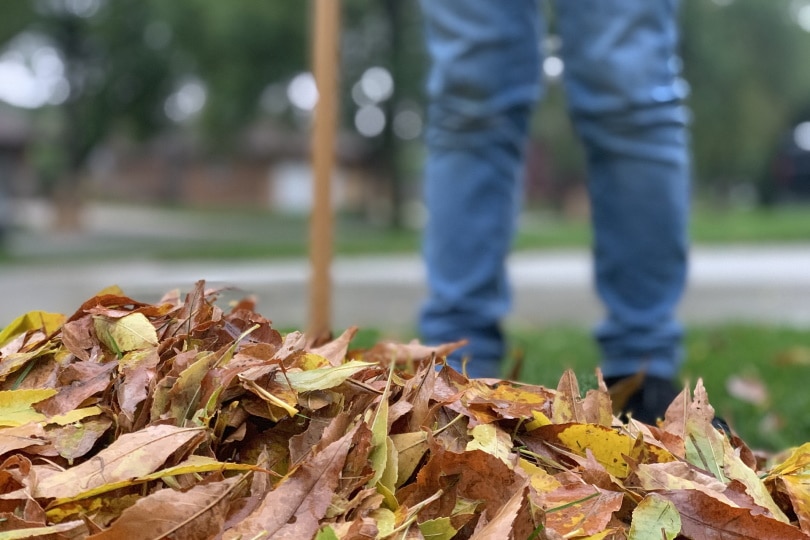
Shredded or composted leaves are excellent mulching materials for flower beds, vegetable gardens, and landscapes. They boast of high nutrient levels, which quickly decompose into the soil thanks to their ability to attract soil organisms that aid in decomposition, like earthworms.
However, it would help if you were careful when using large leaves because they always mat down and smother other plants during winter.
The best way to obtain mulch leaves is to mow around trees on your property using a lawn mower with a bagger.
3. Grass Clippings
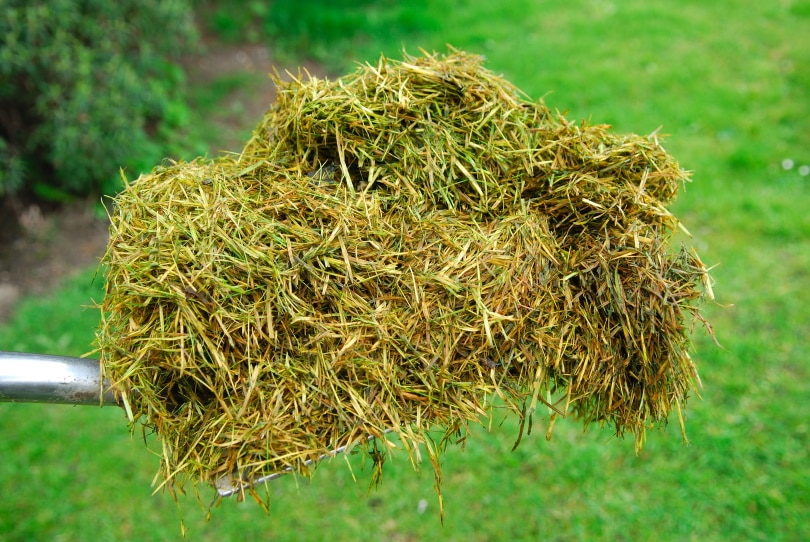
Grass clippings are nitrogen-rich mulching materials best applied on flower and vegetable beds. They are also among the best-known weed suppressants. Despite their beneficial properties, however, grass clippings still have their downsides.
They have a high moisture content that rapidly causes the plants to become slimy in the decomposition process. Some grass types also release an unpleasant smell after they rot and are prone to matting during rainy seasons. Because mating prevents water and air from reaching the soil, you’ll need to rake them gently to separate the lumps of grass clippings.
4. Compost
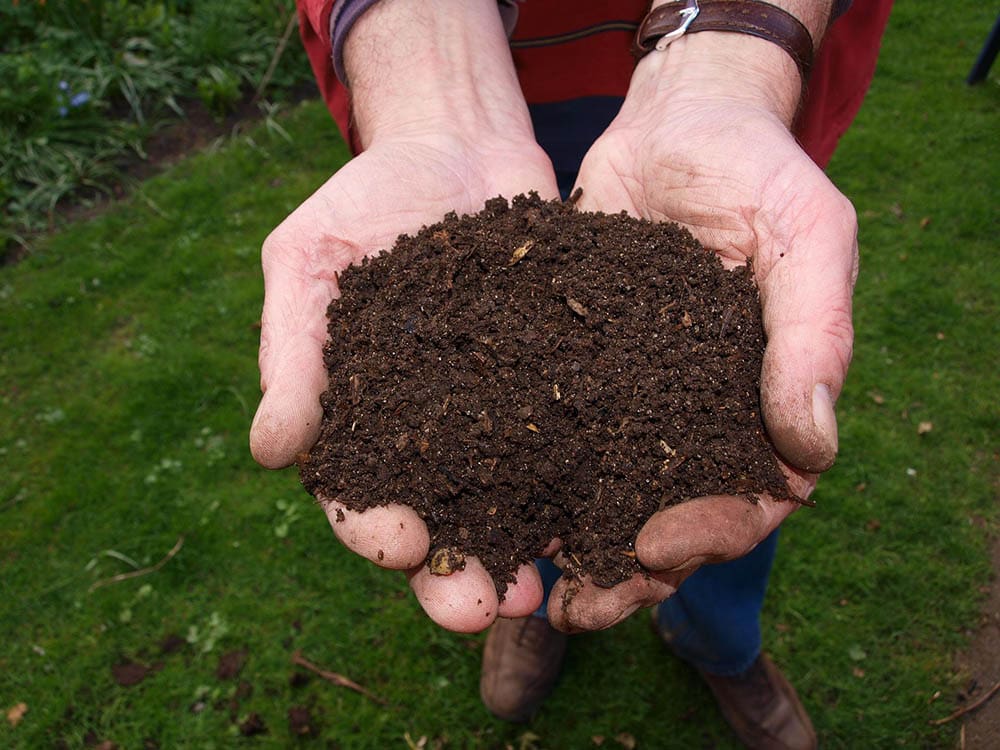
Compost mulch is safe to use anywhere if it’s completely broken down. But before applying it on your flower bed, ensure it isn’t too dry or it may prevent the proper establishment of roots.
It’s also advisable to spread compost mulch thinly before covering it with another layer of mulch, such as grass clippings. Doing so improves the dampness of the compost, which, in turn, keeps it biologically active.
An alternative way of adding compost mulch is by side-dressing your plants. Besides insulating the roots against harsh heat and direct rains, it releases nutrients directly to them, thus benefiting the plants individually.
5. Newspaper Cuttings
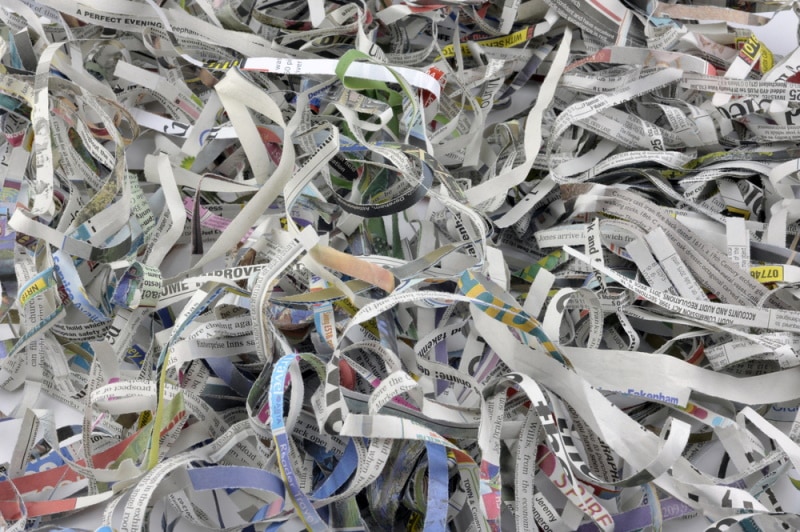
Did you know newspaper clippings are excellent mulch materials? In a world constantly focusing on conserving the environment, newspaper clippings are becoming more popular since most of them, mainly black and white print, use organic dyes. The print is eco-friendly, so newspapers are safe for mulching flower beds.
Like their grass counterparts, shredded newspapers are excellent sources of nutrients for the soil. They also do a great job of suppressing weeds. To apply them, layer five to seven sheets of moist newspaper around the flowers and add another 3-inch-thick layer of organic mulch on top. Double-layering ensures the mulch lasts the entire growing season.
6. Stray and Hay
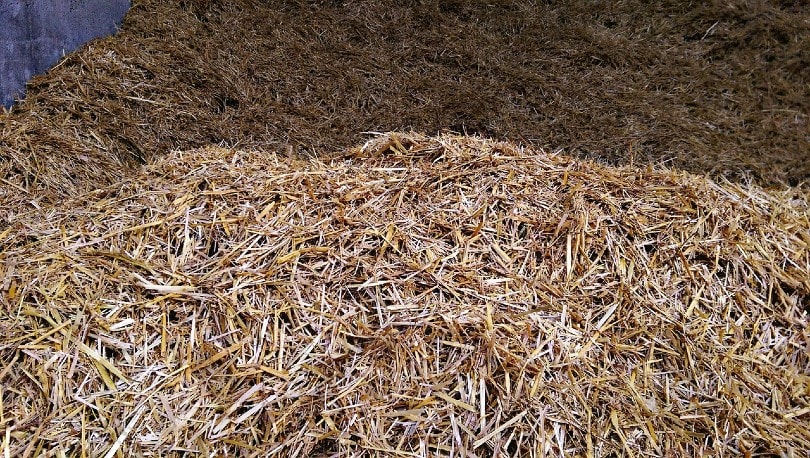
Straw and hay typically take longer to decompose than other mulch materials like compost and newspaper shreds. For this reason, you should apply them during planting to last the entire season. Rake up and dig them into the soil when the season is over to enhance the decomposition of the remaining debris.
Its tendency to attract insects, such as spiders and ladybugs, sets hay apart. Such insects are beneficial since they feed on plant pests that damage your flowers. Just ensure the hay is weed-free and contains no seeds before adding it to your flower bed.
7. Wood Chippings
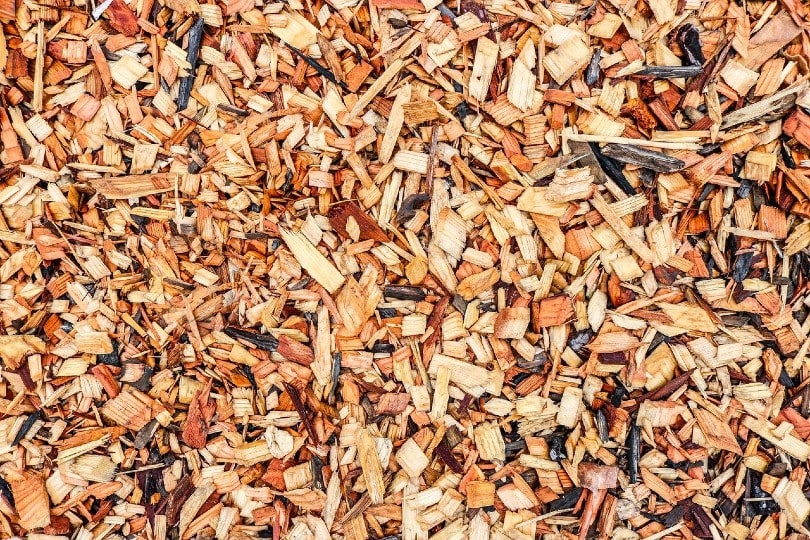
Owing to its ease of use, wood chip mulch is perhaps the most common type of mulch around. To create an authentic and natural-looking appeal, you can spread wood chips on flower beds, vegetable gardens, and shrub borders.
You’ll find decorative wood chips in abundance if you visit any garden center or DIY store near you. Yard waste collection centers and tree companies are also great destinations to obtain wood chippings, especially if you need a larger amount.
Alternatively, consider chipping your Christmas tree and using the chips as flower bed mulch instead of disposing of it. They improve the soil structure and aeration, adding to the appeal and mineral composition.
8. Cocoa Bean Shells
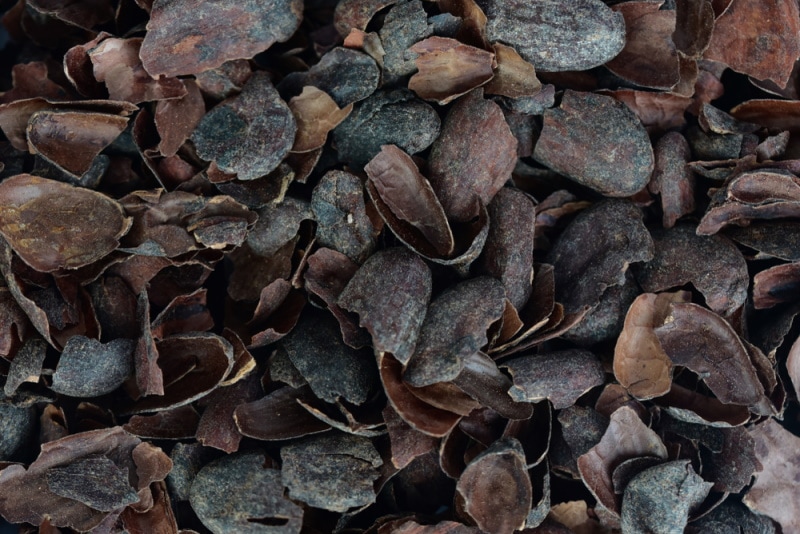
Also known as cocoa hulls, cocoa bean shells are another excellent mulch option that contributes to overall plant and soil health. They are great for roses and other perennial flowers since they slowly decompose while leaching high potassium levels into the soil. Adding cocoa hulls is worthwhile, considering how potash is essential for plant vigor and blossoming.
Inorganic Mulches
Despite serving excellent benefits like their biodegradable counterparts, inorganic mulches have several limitations that make them a second choice. They do not add to soil fertility or control weeds effectively. They also make planting and transplanting plants troublesome, while others prevent water from infiltrating into the soil properly.
Nonetheless, inorganic mulches are great stabilizers in gardens and flower beds that are vulnerable to washouts. They also contribute to beautifying homes and pathways since they allow you to customize the color to match that of your garden or flower beds.
The following inorganic mulches are safe for flower beds:
9. Landscape Fabrics
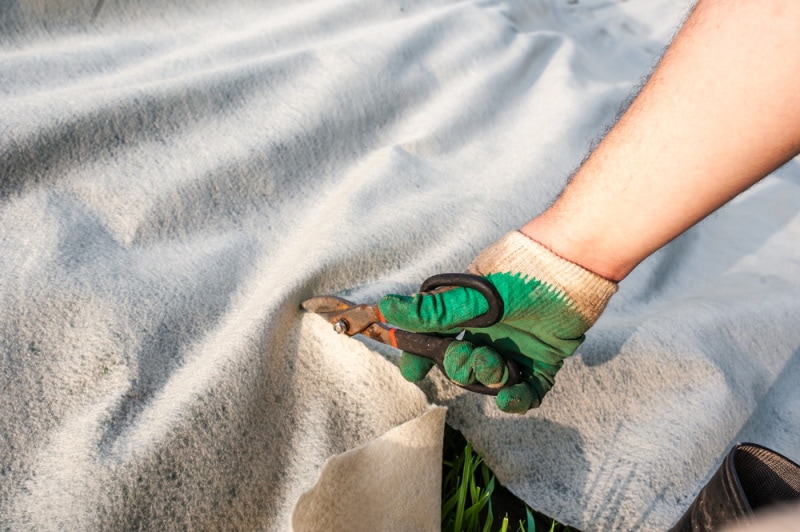
Landscape fabrics are also known as geotextiles. They are permeable to air and water and are good at suppressing the growth of weeds. However, before purchasing them, it’s worth noting that they can’t withstand prolonged exposure to sunlight without degrading.
To counter this problem, it’s essential to top it up with a layer of organic mulch that minimizes the amount of sunlight it gets exposed to. Doing so will also improve the overall aesthetic appeal of your garden.
10. Gravel or Stone

If your soil has poor drainage, stone mulch may be your best option. Stone mulches also come with a series of other benefits, such as improving the general look of your flower bed, keeping the soil warm, and preventing weed growth. This type of mulch is perfect for Mediterranean regions and beds that receive a little extra heat.
11. Synthetic Mulches
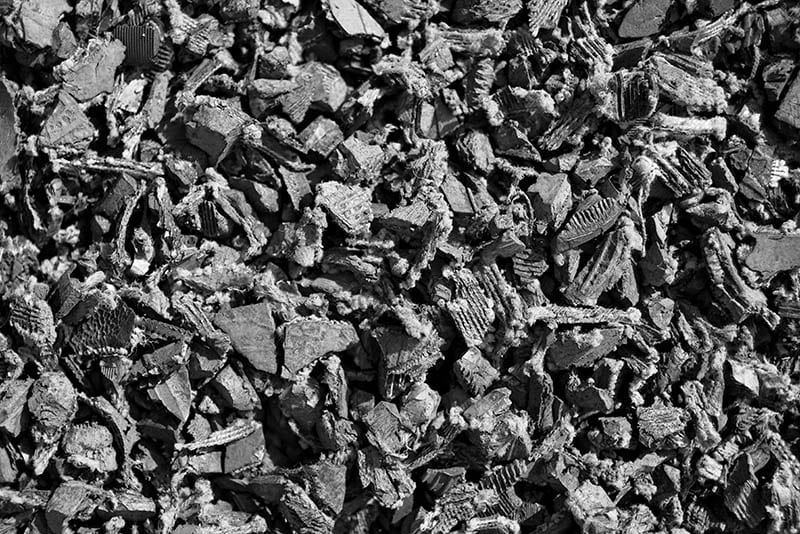
While synthetic mulches are popularly poor at breaking down and improving the soil, they excel at suppressing weed growth, retaining moisture, and improving soil heat. They don’t require regular replacement as well, thanks to their inability to break down easily.
If you are considering a good option for laying the foundation of your flower bed, synthetic or plastic mulch offers unmatched benefits. You can also apply them around shrubs and trees requiring little or no attention and fertilization.
While they do little to improve the appeal of your flower beds, it’s worth appreciating how functional and effective synthetic mulches are. They keep the soil warm when it’s cold and cool it down when it’s too warm.
12. Rubber
As odd as it may sound, rubber works effectively when used as flower bed mulch. Most rubber mulches are recycled from car tires, which aren’t good for the soil. Ensure you lay a plastic foundation beneath them to prevent toxic materials from leaching into the soil as the material gradually degrades.
Rubber mulch isn’t as effective in suppressing weeds as contemporary mulching methods. Also, rubber is a great absorber of heat, which can cause extremely high temperatures in the ground beneath.
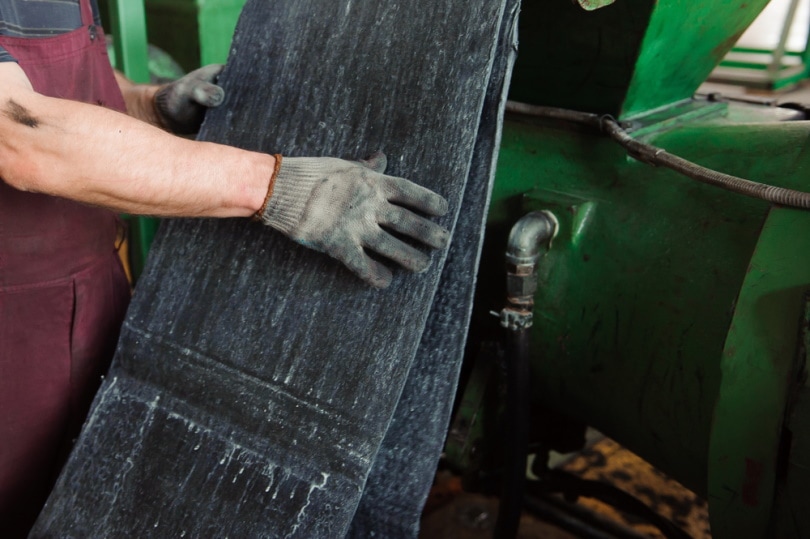
How Much Mulch Should You Add to Your Flower Beds?
Covering your flower bed with up to 3 inches of mulch is recommended. As such, 1 cubic yard of mulch should suffice for a flower bed measuring between 108–324 square feet, varying with the depth of the mulch.
To determine how much mulch your flower bed space will require, you’ll need to find its area in square feet.
- Rectangular or square areas: Area = Length x Width of the planting bed (i.e., 6 feet x 5 feet = 30 square feet to cover).
- Circular areas: Area = Radius x Radius x 3.14 (i.e., 5 feet x 5 feet x 3.14 = 78.5 square feet to cover).
- Irregular areas: Divide the flower bed into rectangles and squares and estimate the total area.
You can find out how many cubic yards of mulch will be enough by multiplying the square footage of the space by the desired depth of mulch you want to install. Then, divide the answer by 324, which is the mulch required for each cubic yard.
For the best results, observe the following guidelines when applying mulch on your flower bed:
- Maintain a 2- to 3-inch layer around fully grown plants. If you use shredded bark and other coarse materials, consider a 4-inch depth, but ensure the mulch doesn’t accumulate to a greater depth.
- Regularly rake up older mulch to maintain its appearance and benefit the plants.
- Avoid volcano mulching. That is, ensure the mulch doesn’t pile up against plant bases or they will hold moisture and encourage rot. Volcano mulching also creates a habitable environment for rodents and other pests.
- Prioritize organic mulch. If you must use inorganic mulch, it’s crucial to ensure it won’t harm the soil, plants, and microorganisms in the soil.

Conclusion
Controlling erosion, saving soil moisture, suppressing weeds, and adding aesthetic appeal are some of the key reasons you should add mulch to your flower bed. While there are several mulch types to choose from, it’s advisable to opt for an organic type. They include using newspaper and grass clippings, leaves, bark, hay, compost, and others.
Also, it’s essential to cover a depth of between 1–3 inches when mulching, as any shallower or deeper will negatively affect the growth of the plants. Ensure you spread the materials evenly and check on them once in a while to confirm whether they are well installed.
Featured Image Credit: ronstik, Shutterstock
Contents



